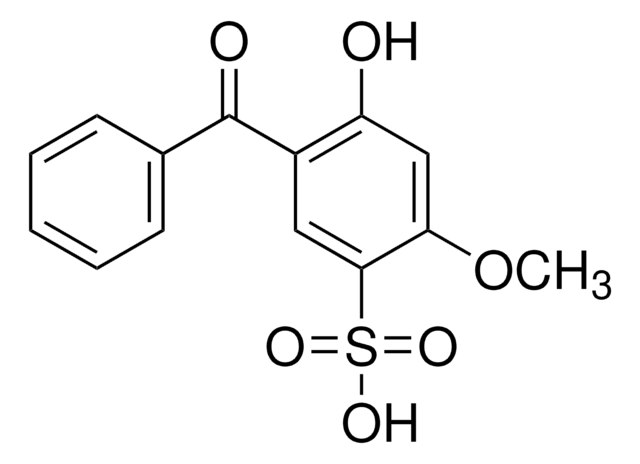The tolerance range for items assigned freezer storage at -20°C is -10 to -25°C.
SML1395
Arachidonic acid sodium salt
from Mortierella alpina, ≥98.5% (GC), waxy solid, lipid precursor
Sinônimo(s):
5,8,11,14-Eicosatetraenoic acid, Eicosa-5Z,8Z,11Z,14Z-tetraenoic acid, Sodium arachidonate, cis,cis,cis,cis-5,8,11,14-Eicosatetraenoic acid sodium salt, 20:4
Selecione um tamanho
Selecione um tamanho
About This Item
Produtos recomendados
Nome do produto
Arachidonic acid sodium salt from Mortierella alpina, ≥98.5% (GC)
fonte biológica
Mortierella alpina
Nível de qualidade
Ensaio
≥98.5% (GC)
Formulário
waxy solid
cor
white to off-white
solubilidade
methanol: 50 mg/mL, clear, colorless to faintly yellow
Condições de expedição
dry ice
temperatura de armazenamento
−20°C
cadeia de caracteres SMILES
O=C(O[Na])CCC/C=C\C/C=C\C/C=C\C/C=C\CCCCC
InChI
1S/C20H32O2.Na/c1-2-3-4-5-6-7-8-9-10-11-12-13-14-15-16-17-18-19-20(21)22;/h6-7,9-10,12-13,15-16H,2-5,8,11,14,17-19H2,1H3,(H,21,22);/q;+1/p-1/b7-6-,10-9-,13-12-,16-15-;
chave InChI
DDMGAAYEUNWXSI-XVSDJDOKSA-M
Descrição geral
Aplicação
Ações bioquímicas/fisiológicas
Atenção
Código de classe de armazenamento
11 - Combustible Solids
Classe de risco de água (WGK)
WGK 3
Ponto de fulgor (°F)
235.4 °F - closed cup
Ponto de fulgor (°C)
113 °C - closed cup
Escolha uma das versões mais recentes:
Certificados de análise (COA)
Não está vendo a versão correta?
Se precisar de uma versão específica, você pode procurar um certificado específico pelo número do lote ou da remessa.
Já possui este produto?
Encontre a documentação dos produtos que você adquiriu recentemente na biblioteca de documentos.
Os clientes também visualizaram
-
What is the tolerance range around -20C for the recommended storage temperature of SML1395
1 answer-
Helpful?
-
Active Filters
Nossa equipe de cientistas tem experiência em todas as áreas de pesquisa, incluindo Life Sciences, ciência de materiais, síntese química, cromatografia, química analítica e muitas outras.
Entre em contato com a assistência técnica









